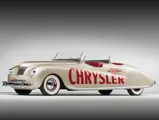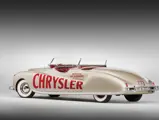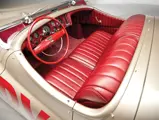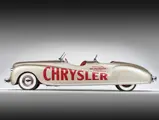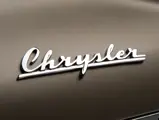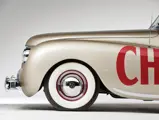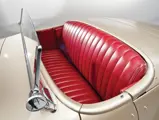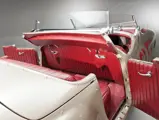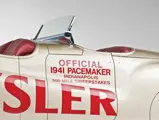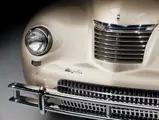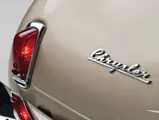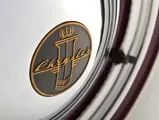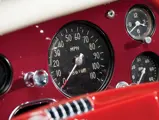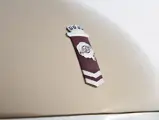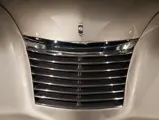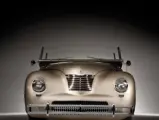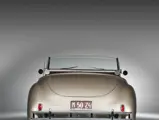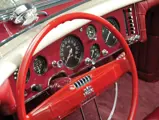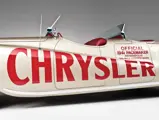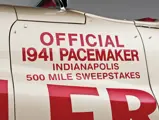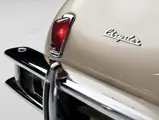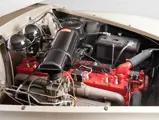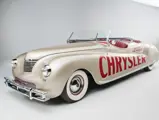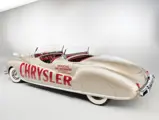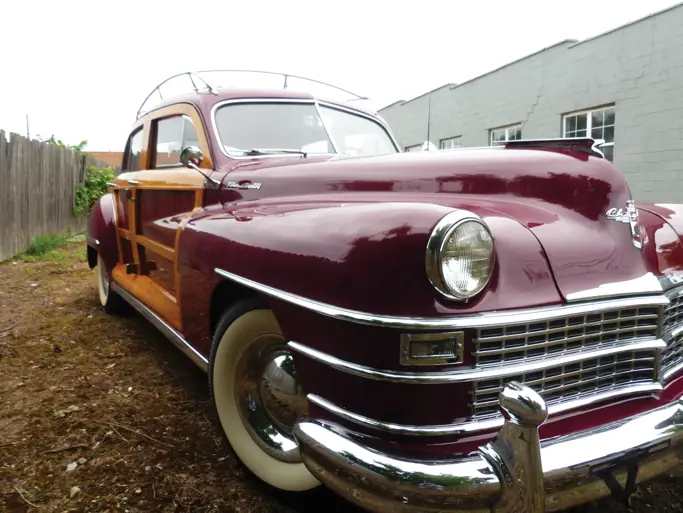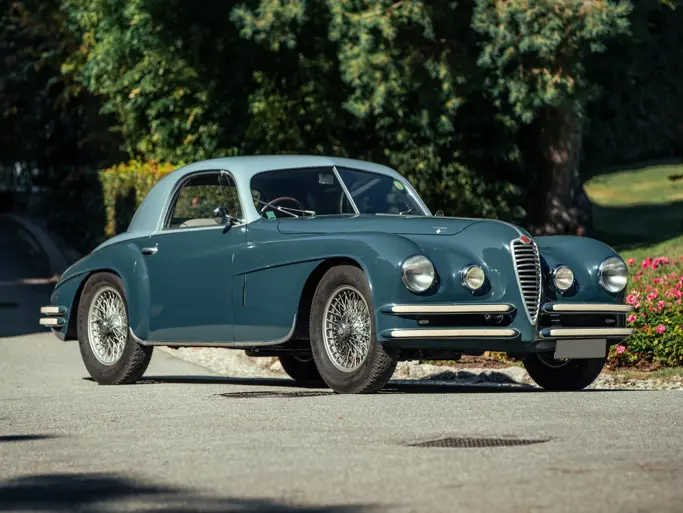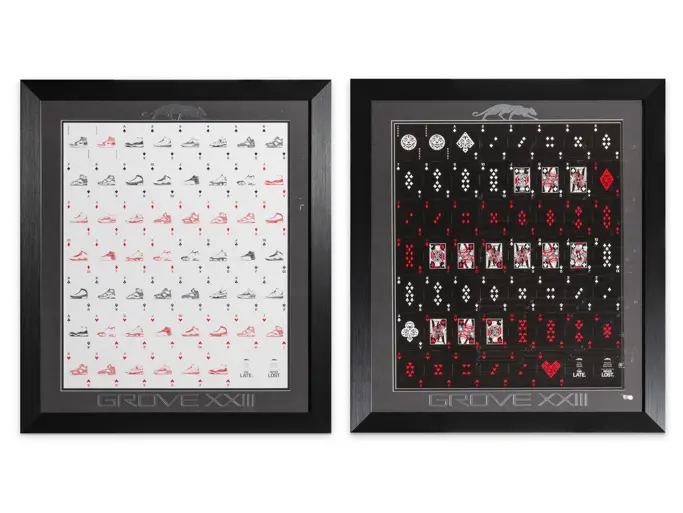Amelia Island 2012
1941 Chrysler Newport Dual Cowl Phaeton by LeBaron
{{lr.item.text}}
$1,500,000 - $2,000,000 USD | Not Sold
 | Amelia Island, Florida
| Amelia Island, Florida
{{internetCurrentBid}}
{{internetTimeLeft}}

143 hp, 322 cu. in. inline eight-cylinder engine, three-speed overdrive Vacamatic transmission, independent front suspension with coil springs, live axle rear suspension with semi-elliptic springs, four-wheel drum brakes. Wheelbase: 145.5"
• The actual pace car of the 1941 Indianapolis 500 race
• Subsequently owned and driven by Walter P. Chrysler, Jr.
• A design icon, one of only five examples built and the only one with exposed headlights
• Recent concours-quality restoration to original colors
The Great Depression had not only been hard on the fortunes of the Chrysler Corporation, but the failure of its attempted bold advance, the Airflow, was a blow to its spirit as well. The company had been forced into a reactive stance, shying away from anything that could be perceived as “new” or “untried.” As the ’30s waned, and slowly the glimmers of a recovery could be sensed, it was realized in the executive suite that perhaps they had gone too far from the kind of style and progress which would be needed in the decade ahead to win the public’s attention.
Chrysler’s competitors seemed to understand what was needed, especially in the premium car field. Edsel Ford’s styling studio under the direction of Bob Gregorie had been executing a style makeover on the Lincoln brand, bringing a European-influenced sophistication to its products. Ed Macauley, working with the brilliant Alexis de Sakhnoffsky, created striking style at Packard, and Harley Earl’s studios gave Cadillac some of the most elegant designs of the decade.
Chrysler’s chief, K.T. Keller, who had succeeded Walter P. Chrysler after the company founder died in August 1940, responded enthusiastically to an idea in the early fall of 1940 from Ralph Roberts of LeBaron with a proposal for two show cars to prove Chrysler was still in the game. The sketches for the two-seater Thunderbolt and the four-seat Newport dual-cowl phaeton were presented, and Keller boldly moved past the idea of one-off show cars and instead ordered six of each design to be built. That was great news for the coachbuilder, but more worrisome was that all 12 had to be delivered in 90 days, to appear at the first auto salons of the 1941 season! In the end, only five of each made it out in time, but they were a sensation around the country, with the Newport’s dramatic streamlined styling making a particular impression at the auto shows, fairs and special events at which they appeared.
On the long 145.5-inch wheelbase Imperial chassis, Roberts had created a truly “modern” car yet one which re-interpreted a style that by then had already largely passed out of fashion: the dual-cowl phaeton. It has been said that Roberts’ inspiration for the Newport was to give a vision of what the great dual-cowl phaetons of Duesenberg would look like in 1941 had the company survived the Depression. The character of that legendary marque, known for a unique combination of luxury, style and speed, is evident in the sleek yet substantial feel of the Newport.
This car is without doubt the most important of all the Newports, as it served as the 1941 Indianapolis 500 ‘Pacemaker Car’ in what would turn out to be the last race run for five years. It can immediately be identified as the very car which paced the field thanks to its distinctive open headlights, which distinguish it from the others that are fitted with concealed lights. Chrysler missed no promotional opportunities for the Indy 500 festivities on Memorial Day, 1941 and brought other Newports to the Speedway for VIP transportation.
Following its star turn at the Speedway, it was later used by Walter P. Chrysler, Jr. and refinished in a color scheme of pastel green with dark green leather. In this livery it could be seen cruising around Detroit’s streets, the company’s response to the ‘personal cars’ of industry leaders such as Edsel Ford’s Continental, Ed Macauley’s Phantom and the Y-Job of Harley Earl. As an open four-door with cut-away doors, it struck an even more dramatic note than any of the others and clearly pointed toward the streamlined future Chrysler tried to see nearly a decade before.
In many ways, the ownership of this extraordinary car by Walter Chrysler, Jr. was quite fitting. Chrysler was a co-founder of the Modern Museum of Art in New York and dedicated his life to art, astutely collecting many of the finest pieces by renowned artists around the world. In fact, it was a life-long passion that began in college at Dartmouth, where he began an art magazine with Nelson A. Rockefeller. The Newport was, quite simply, automotive art at its finest, and it fit his character perfectly.
As a vehicle in more or less ‘practical’ use, LeBaron devised and fitted a top which folded completely beneath a metal cover and installed electronic control for raising and lowering the rear cowl to ease passenger entry and exit. The Newport was very well cared for over the decades which ensued, and when it was chosen to run pace laps on the track at Laguna Seca in August 2003 at the Monterey Historic Races, it appeared much as it had back in 1941.
While appearing nicely patinated, the Newport had in fact become worn, and as not all the finishes were original, the decision was made in 2009 to give this important piece of history the proper restoration it merited. The result is stunning, the product of hundreds of hours dedicated to a professional nut-and-bolt restoration. The champagne paintwork faithfully brings the Chrysler back to its appearance at the 1941 Indianapolis race, as can be seen in a vintage color film of the event. The long, sweeping, almost organic lines of the Newport are enhanced by the superb panel fit of this car. The sparingly applied bright trim adds just the right amount of shine, and the detailing of the upper and lower grilles give a wonderful layer of texture to the smoothness of the shape. The ‘biplane’ bumpers are a whimsical touch yet serve as obviously practical protection as well.
The deep maroon leather upholstery, simply rolled and pleated, complements the exterior beautifully. The sweeping cowl roll over the driver-focused instrument panel, which is complete with pushbutton radio, give this Newport a decidedly sporty but still elegant feel.
Under the hood can be found what is said to be a special version of Chrysler’s most powerful flathead ‘Spitfire’ eight-cylinder engine, coupled with the innovative ‘Vacamatic’ three-speed overdrive transmission. The drivetrain provided this Newport with the ability to bring the race cars around the Indianapolis Speedway at a sufficiently sprightly clip, aided by clutch-less shifting in and out of overdrive in the top two gears. Even in the ‘working spaces,’ the finishes are equal to those elsewhere on the car, done to the highest and most correct quality.
This unique piece of design, industry and motorsport history now stands ready to take its new caretaker to the leading automotive events around the country—and indeed the world—to share with an admiring public the visionary advanced design and superb build quality of the Newport, exactly as was done when it was new more than 70 years ago. It is at once a perpetually desirable styling statement, an extraordinary piece of Chrysler history and the brainchild of some of Detroit’s most forward-thinking visionaries.

